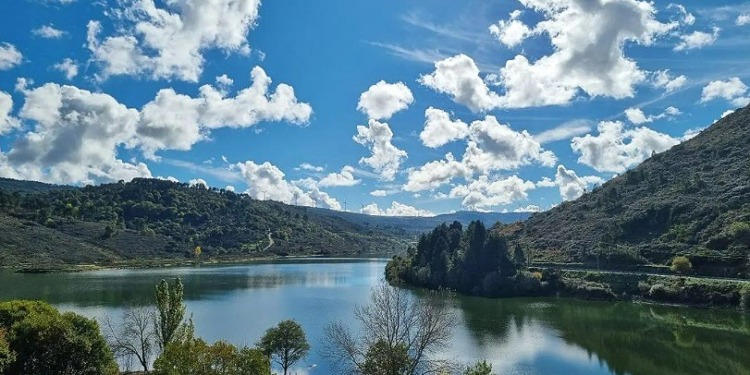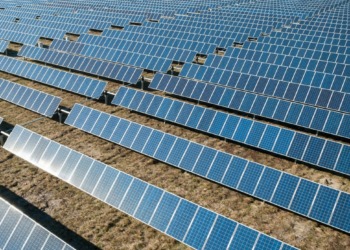The idea of putting nature’s patterns and principles at the heart of what we do as we take our next steps along the path of the human story may seem radical to some. That’s because so many have forgotten our close kinship with nature – ours is a coexistence that goes hand in hand with an interdependence essential to our very survival.
We are not separate from the natural world, and to heal our planet is to heal the current narrative of separateness. We coexist biologically with the soil, with carbon cycles, with water cycles, and with all the trees and wetlands that hold an ingenious network of systems that have sustained sentient beings since the dawn of time.
Shifting our ecological consciousness means looking deeply at the narratives that are all around us, spike our nervous systems, and result in ever more human-centric approaches.
To achieve real sustainability means explicitly emphasizing the role nature plays in our lives and existence, raising the ecological consciousness by advocating on behalf of nature itself as the holder of wisdom and the nuanced mechanisms to maintain the balance on our one and only planet Earth.
First, we have to recognize the narratives being built around us, from our content diet to how information is affecting us.
Second, we need to honor and make space for the deep grief that lives in an embodied way within so many of us.
And third, by learning from nature and recognizing our interconnectedness to it, we can reconnect with awe and joy to enable us to better navigate the fraught times emerging, and act on behalf of nature because we belong.
Information (and misinformation) awareness
In this age of oversaturation and constant flow of information as well as disinformation, we need to become aware of both the stories that are being told to us and by us, as well as how we receive and are digesting climate information.
As with many things in life, our reaction can be cerebral or emotional and embodied. Step one is that awareness is key regardless of whether we are consuming information actively or passively.
Once we have that touch of perspective, we can start understanding the narrative or narratives that we are embedded in or exposed to.
This gives us agency, and we can then begin to understand more deeply. That, in turn, can allow us to nurture what we need to react from a place of “processed calm”. That means that instead of a reactive, knee-jerk response, we can strive to feel all our emotions and come out the other side, to focus on what we want to say or do about the information in question.
Honoring and processing grief, an expression of increased awareness
Second, we need to make room for grief – and this despite many of our cultures not providing us the words or tools to do so. The onslaught of images from wildfires, extreme weather events, massive heatwaves in the summer – and all their impact on nature and people… it’s a lot.
We have to honor the sadness and grief we feel about the state of the planet and process them rather than try to move past them by sweeping them under the proverbial carpet.
One way to do this is to connect with nature and learn from it. After all, nature is the best teacher when it comes to the circle of life and the inherent role death plays in it. Anyone who manages a compost or is a gardener – whether tending to just a few herbs in pots on a windowsill or spending time in an extensive vegetable garden – is witness to the perpetual cycle of life and death.
Another reminder from nature: How we think matters
Increased awareness and finally full acceptance of the natural cycle of life and death is not all that nature can teach us. We can also turn to biomimicry, a term that describes looking to natural processes to find solutions. That’s how we developed velcro (from the burdock plant) and LED lights (inspired by firefly lanterns), to name but two examples.
However, we also need to resist oversimplifying the kinds of solutions we need. The way our brains work means that we tend to break complex systems into their parts to understand them better, but that also means that if something is broken, we try to isolate the problem and fix it.
While this may work well for a car engine, for instance, it is misguided when it comes to the planet. That’s because everything is interconnected, and as such local actions have global implications.
The endangered Red Knot shorebird, for instance, is a migratory bird that spends part of the year in Brazil before flying all the way up to the Arctic. Along this trying journey, Red Knots have historically stopped in Delaware of all places. They do this to feast on horseshoe crab eggs, to store up on the energy they will need for the second half of their journey.
But horseshoe crab populations in Delaware have been affected by climate change (as well as other factors that we won’t go into here): Some years, warmer water in the bay has led to them laying eggs earlier, putting them out of sync with the Red Knots. This doesn’t just affect the Red Knot birds and their chances of making it to the arctic, but likely has a knock-on effect every step of the way as the birds are an integral part of the ecosystem throughout the seasons.
As Albert Einstein is credited with saying, we cannot solve our problems with the same thinking that caused them in the first place. Therefore, the siloed thinking that has contributed to the system we live in today cannot solve interconnectedness issues.
Cultivating joy – as a path to awakening our “inner climate activist”
If this is starting to sound too complex, rest assured: the solution is deceptively simple. Now that we are aware of information flows and have embraced and processed grief, a single step remains: We need to cultivate awe and inspiration for nature in a way that integrates a deep appreciation for our inherent interconnectedness.
This can lead to a genuine shift in consciousness, reinforced by internal practices to reshape how we relate to the natural world.
While many companies have contributed to making us feel responsible as individuals, that’s a misdirection, because the scale of change needed goes beyond shorter showers and eating less meat. That doesn’t mean such actions aren’t part of the solution, however, because the truth is that personal agency is key to addressing what is a systemic problem.
When you dive into self-improvement, one essential tenet is that you can only ever work on yourself. The same is true when it comes to ecological consciousness, but we also believe in the power of shared experiences and community, and collaborative action.
Finding a balance between joy and fear, or hope and urgency, might be easier said than done, but it’s within reach. And if we take a page out of the permaculture philosophy, which tells us the problem is the solution, maybe we will realize that together, we have the power to generate as much positive impact as the opposite.
The choice is ours.
For those interested in pursuing these issues: A retreat “Nurturing the Climate Activist Within” is organized this summer in Portugal from 27 June to 2 July – the retreat is a collaboration between Casa Beatrix, an off-grid farm being renovated into an eco-tourism project run by Shahnaz and Grounded-in-Motion, founded by Carine and focused on deepening the human-earth connection and educating for sustainability. At the retreat, participants will be given an opportunity to develop and practice the principles and values exposed here. The event is for anyone working on climate justice or activism, seeking to educate oneself for sustainability, or eager to explore ecological consciousness within one’s own field.
Editor’s Note: The opinions expressed here by the authors are their own, not those of Impakter.com — In the Featured Photo: Barragem do Caldeirao (Portugal): The artificial lake has just filled up with rain Source: Shahnaz Radjy’s collection on Instagram: https://www.instagram.com/thecramooz/








